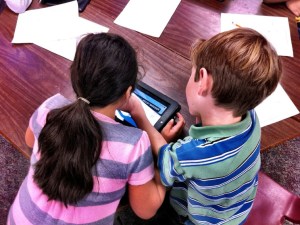
 Things are looking grim for many students in the United States. The most recent National Assessment of Educational Progress (NAEP) revealed that more than 60% of American students graduate below proficiency in all academic areas. The number grows to more than 80% when you look at minority and underprivileged students. Researchers around the country believe this is primarily due to one major reason: Students are missing the basics. When students don’t possess the basic building blocks, understanding and mastering complex concepts is impossible. To overhaul the system and fix these underlying issues, three complementary teaching skills are required:
Things are looking grim for many students in the United States. The most recent National Assessment of Educational Progress (NAEP) revealed that more than 60% of American students graduate below proficiency in all academic areas. The number grows to more than 80% when you look at minority and underprivileged students. Researchers around the country believe this is primarily due to one major reason: Students are missing the basics. When students don’t possess the basic building blocks, understanding and mastering complex concepts is impossible. To overhaul the system and fix these underlying issues, three complementary teaching skills are required:
- Strategic Inquiry
- Direct Instruction
- Precision Teaching
Let’s take a look at what these skills are, and how they can be implemented.
Strategic Inquiry
Nell Scharff Panero, a professor and author, invented what she called “Strategic Inquiry” over 15 years ago. In her research, she’s seen it transform schools and teachers. The basic premise is that teachers need to pinpoint exactly what skills their students are missing. Like many other methods, teachers form groups, discuss and study student work, and design interventions to target the gaps. However, Strategic Inquiry has two important distinctions: the detailed size of the missing skills, and studying student work before and after the intervention to see what worked. There is no attempt to figure out why students are missing these skills, only what they are. Studying assessment data is also encouraged. Scharff Panero coaches teachers to look at the results, identify where students struggle the most and then look for patterns.
In one low-performing school, students struggled with language arts, particularly writing complex, rich sentences. With the help of a facilitator, teachers dug in and eventually realized most of the students were missing one particular skill: the ability to use coordinating conjunctions such as “but,” “because,” and “so.” Subsequent reports found that students at high schools that adopted Strategic Inquiry were almost 2½ times more likely to be on track to graduate than students at comparable schools without Strategic Inquiry.
By putting the work in to identify these learning gaps, Strategic Inquiry allows students to pick up missing skills and gain the skills necessary for more complex concepts.
Direct Instruction
Direct Instruction is the process of identifying essential foundational skills that students must understand before they’re able to move up a curriculum ladder. When students truly understand these more basic skills, complex understanding comes naturally as they put ideas together. Unfortunately, many teachers and teaching methods focus on complex understanding from the beginning and try to get students to work backward. Many standards and philosophies describe these high-tier, complex skills that students should understand and be able to put into practice, but not enough attention has been put into how to get there.
Precision Teaching
Similarly, Precision Teaching is the idea that students must become truly fluent in basic skills before they can be built upon. This means that not only should basic skills be taught, but practiced. Fluency is possible only after repeated, the reinforced practice of skills over time. Teachers need to measure this fluency over time (and continue to revisit basic skills) to figure out when they’ve become reliably understood and remembered. Only then can they build upon those skills to teach something more complex.
What’s Next?
Although all three of these practices seem fairly obvious, research shows they’re being overlooked in many classrooms. Two of the problems may be when students are all missing different core skills, and a classroom is made up of students who learn at vastly different rates. It’s immensely difficult for teachers to give students the time and attention they need on particular core skills when others are ready to move on.
This problem is one of the reasons we created Wowzers. By using the individualized, adaptive curriculum, students can focus on those core skills they lack. Using our partnership with NWEA, teachers can import their students’ MAP Growth scores to automatically create a personalized curriculum that crosses grade levels to tackle exactly the right content for each student. The program automatically slows down and reinforces skills when students begin to struggle, and the adaptive nature of Wowzers keeps students engaged and ready to practice skills until they’re mastered. The real-time reports in Wowzers allow teachers to quickly identify where students are at and what they need to work on.
In classrooms that use Wowzers, teachers finally have the time and power to implement Strategic Inquiry, Direct Instruction, and Precision Teaching.

0 Comments